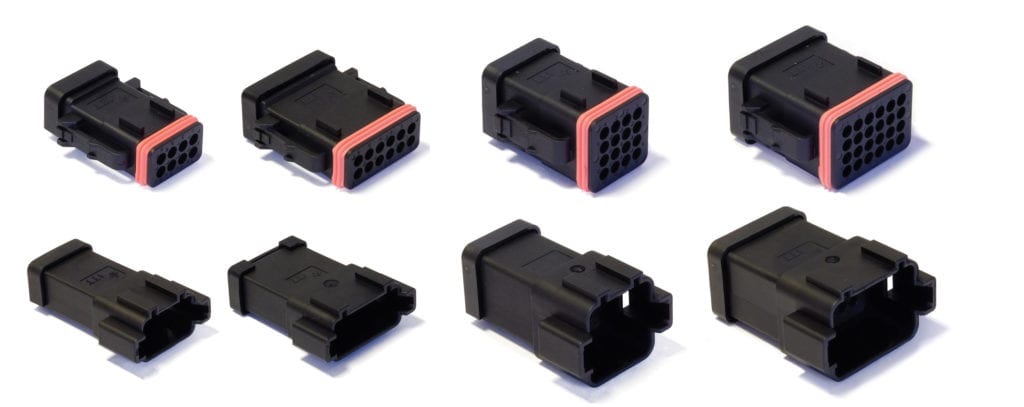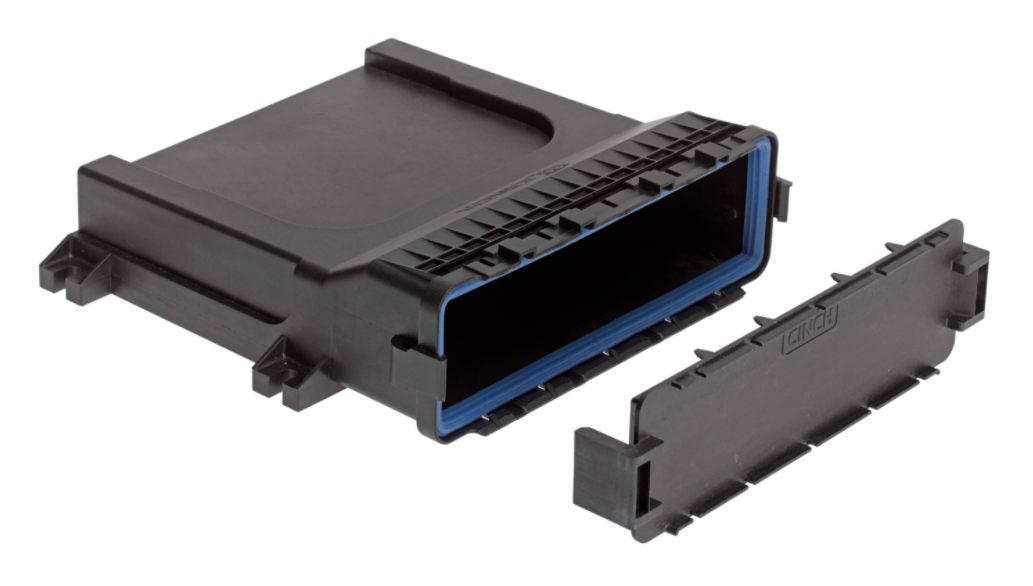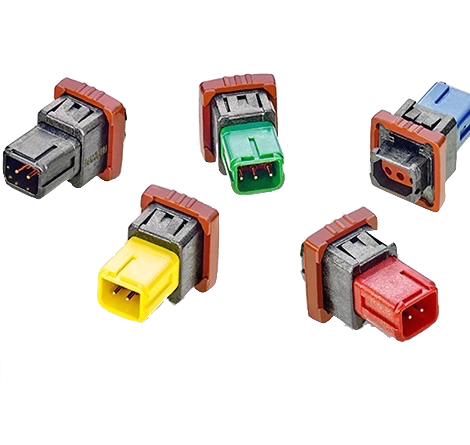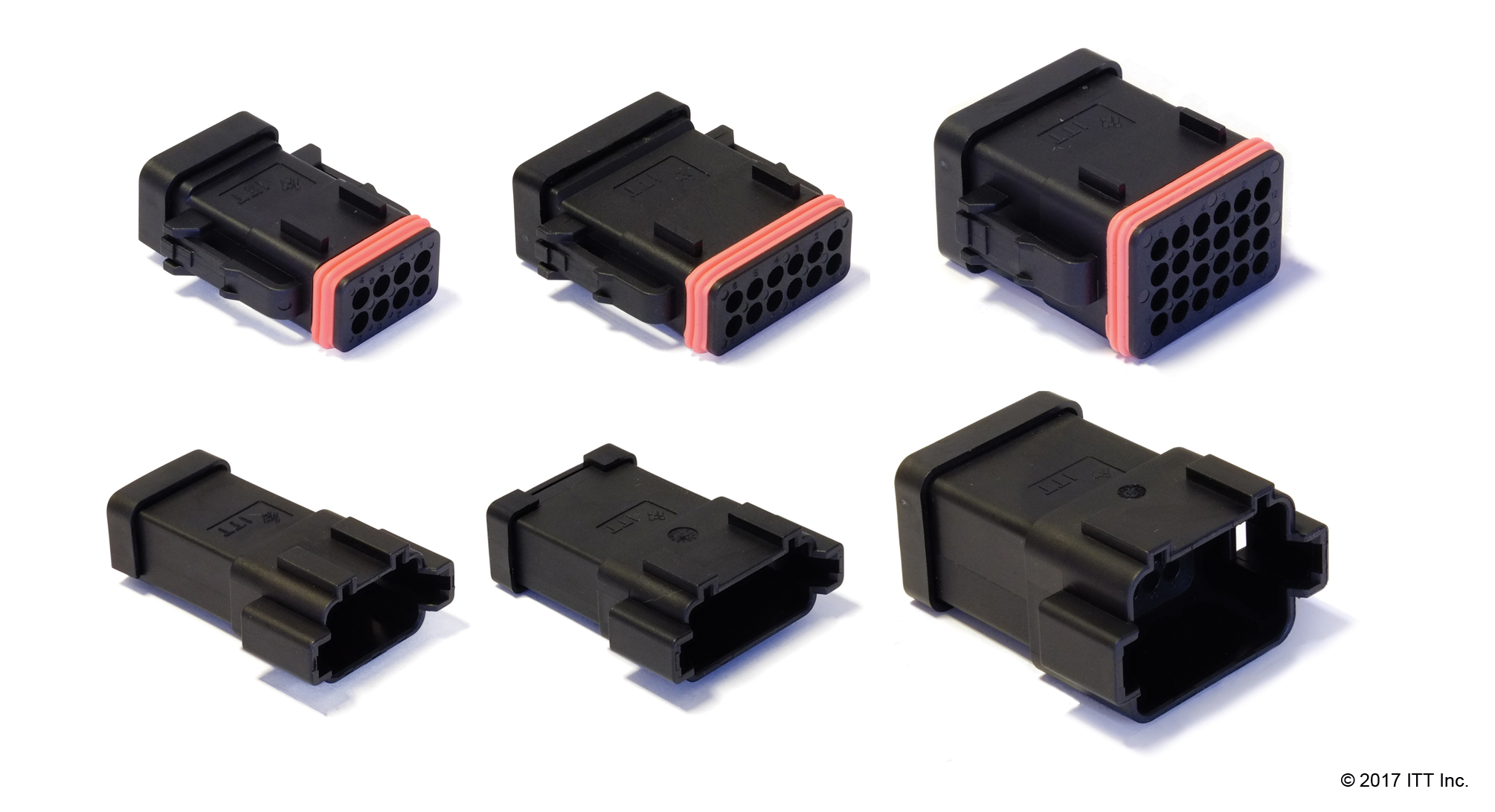Heavy-Duty Connectors for Heavy-Duty Trucks
Businesses are buying more heavy-duty trucks to accommodate changing consumption patterns and interconnect suppliers are designing hardier and more functional heavy-duty connectors to help these trucks endure the rigors of the road.

Heavy-Duty Connectors Help Trucks Withstand the Rigors of the Road
Our consumption patterns have changed. Instead of going to physical stores to make purchases, consumers are now more likely to shop online for everything from groceries to clothing to tools. As a result, there has been an exponential increase in heavy-duty trucks on the roads: in the US alone, 31 million commercial trucks move more than 70% of all the freight transported each year, according to the American Trucking Associations.
Businesses are meeting consumers’ need-it-now expectations with a combination of heavy-duty trucks that move goods to regional distribution centers and medium-duty trucks that handle the last-mile delivery to consumers. Orders for heavy trucks, or Class 8 vehicles, reached record levels in 2018, with overall global production reaching 2.4 million units. However, by the fourth quarter demand severely contracted, and in 2019 many makers are reporting cancellations as the industry balances freight demand with available trucks. Even so, makers are busy fulfilling the backlog while also developing future models that integrate new technologies.
Class 8 trucks are a special category of heavy trucks that are also known as cab-over-engine and semi-trailer trucks. They are the largest classification of vehicles and serve as the backbone of the logistics industry, crisscrossing the continent with fresh produce and agricultural products, petroleum and other chemical products, packaged goods, white goods, and nearly all other freight. Unloaded, they weight 26,001 to over 33,000 pounds (11,794 to 14,969 kilograms). This category also includes other heavy-duty vehicles, such as waste-hauling trucks, tank trucks, and certain construction vehicles, including mobile crane trucks.

Advanced electronics play a greater role than ever in these vehicles, from cabin comforts and wireless tracking and logging functions to drivetrain, diagnostics, and engine performance systems. Heavy-duty trucks integrate unique functions that require even greater electronic content, including CAN bus protocols, heavy-duty suspension systems, trailer controls, braking systems, and safety modules.
Additionally, makers like Volvo, Tesla, Mack Trucks, and Daimler Trucks North America are bringing a variety of alternative-fuel Class 8 vehicles to market.
A few examples: Toyota and Kenworth will launch its hydrogen Class 8 truck by late 2019. Shell will build a corresponding network of hydrogen fueling stations, focusing on California, where pollution-limiting regulations are driving innovation. The all-electric Tesla Semi, now in production, promises 500 miles on a single charge and the company plans to build a network of Megacharging stations to serve Class 8 vehicles. Nicola Motors has partnered with Bosch on the zero-emissions Nicola Two truck, which will feature a fuel-cell powertrain and advanced computing systems.
Heavy-duty vehicles like these require heavy-duty connectors in order to perform under the relentlessly rugged conditions of the road. In addition to the shock, vibration, and continuous service demands, the connectors, sensors, terminal and other components in these vehicles must endure exposure to temperature swings, moisture, road salt spray, chemicals, and debris. The average used heavy-duty truck has close to 500,000 miles on the odometer and is prepared for many more, thanks to the exceptional ruggedness and durability of the components specified in its electronic systems.
“Sensors and controls systems are a critical part of the central nervous system of today’s heavy-duty trucks and advances in predictive maintenance and autonomy will only increase the quantity and complexity of connectivity within these vehicles. As such, high density, small form factor weight-optimized connectors are increasingly a requirement,” said Marcel Goedecke, ITT Cannon senior product manager. ITT Cannon developed its CTC series with this in mind.

ITT Cannon’s CTC series
One key feature of heavy-duty connectors designed for use in demanding transportation applications is environmentally sealed housings that protect the contacts. The use of durable, flexible thermoplastic housings, which can expand and contract without cracking or loosening, help heavy-duty connectors endure very hot and very cold ambient operating temperatures. Stainless steel is another material option that performs well in heavy duty connectors. At the same time, long service life and the potential for collision damage make ease of use essential, so housings must be secure in use but easy to disengage for repair or replacement. Connectors that are designed for tool-less hand mating and unmating accomplish these real-world goals. Yet security while in use is imperative as well. Secondary locking features can help retain those connections in the event of shock or under conditions of continuous vibration.

Cinch ModICE modular connector enclosures
The Cinch ModICE® modular connector enclosures and SHS connectors are designed to perform on electronic control modules commonly found on commercial vehicles. They operate in a wide range of extreme environmental conditions, from -40°C to +125°C, due to flexible thermoplastic materials, vented enclosures, and heat sink features. They are also sealed to IP67 and IP69K requirements and have been tested to endure salt spray for 96 hours.
TE Connectivity’s DEUTSCH line is specifically designed for harsh-environment use and serves the heavy-duty truck market as well as other transportation modes. The DEUTSCH HDP20 and HP30 lines are circular connectors that perform well in truck applications. The DEUTSCH HP30 has a durable, corrosion-resistant aluminum housing and features an integrated locking feature for additional security. The DEUTSCH HDP20 features rugged thermoplastic and is secured with either a clamshell snap enclosure or by screwing it onto a threaded adaptor. These are large multi-pin connectors that can be mated and unmated by hand to accommodate fast repairs and keep vehicles on the road.

TE Connectivity’s DEUTSCH line is specifically designed for harsh-environment use and serves the heavy-duty truck market as well as other transportation modes.
The Tru-Loc Series by Amphenol Industrial Group offers heavy-duty connectors designed for demanding applications, such as under valve covers on diesel engines and in high-vibration sensor applications. Its molded thermoplastic main plug body has a secondary latch to ensure a secure connection under duress. It also has a tight fluoroelastomer main join seal that keeps out fluids, including diesel fuel.

ITT Cannon’s CTC Series addresses concerns about reducing electronics weight in heavy vehicles.
ITT Cannon’s rugged CTC Series addresses concerns about reducing electronics weight in heavy vehicles that are now carrying more cabling and components than ever before. Smaller, space-saving footprints, reduced weight, and higher pin counts makes this series a good choice to lessen the load. This simple, cable-to-cable interconnect solution ensures reliable signal circuits under difficult road conditions. The contacts are hand inserted to eliminate the need for sealing plugs and wedge locks. CTC can be used in under-the-hood electronics, inside the cab, and in chassis, controllers, and lighting systems in Class 8 vehicles.
Like this article? Check out our other New Technology articles, our 2019 Article Archive, and our Transportation Market Page.
- Meet the Connector: DIN Standard Connectors - April 16, 2024
- Software-Driven Radio Reinvigorates Old Technology - April 9, 2024
- What is a Busbar? - April 2, 2024





